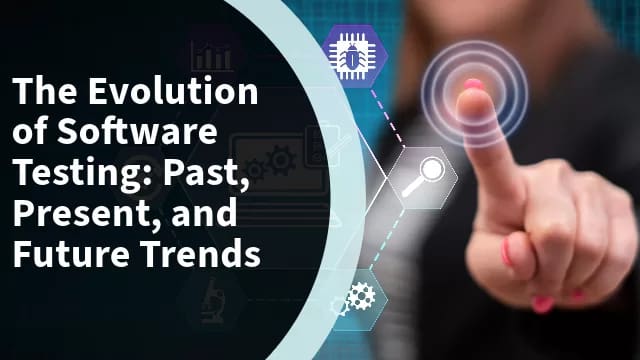Introduction
Welcome to the fascinating journey through “The Evolution of Software Testing: Past, Present, and Future Trends.” In today’s fast-paced technological landscape, software testing plays a pivotal role in ensuring the quality and reliability of software applications. This comprehensive guide will take you through the historical roots of software testing, delve into its current state, and offer insights into the exciting future trends. So, fasten your seatbelt as we embark on this software testing odyssey.
A Glimpse into the Past
Understanding the Origins
Software testing’s roots can be traced back to the early days of computing. In the 1940s, pioneers like Grace Hopper recognized the need to systematically evaluate computer programs for errors. This era marked the birth of software testing as a discipline.
The Waterfall Approach
The 1970s saw the emergence of the Waterfall model, a sequential software development process. Testing became a distinct phase, emphasizing post-development quality assurance. However, this approach had limitations, as it often led to late bug detection.
The Rise of Agile Testing
With the 21st century came the Agile methodology, transforming the software development landscape. Agile testing introduced iterative testing throughout the development lifecycle, enabling early bug identification and faster release cycles.
LSI Keyword: Software Testing History
Present-Day Testing Practices
Manual vs. Automated Testing
Today, software testing encompasses a spectrum of practices, including manual and automated testing. Manual testing relies on human testers to execute test cases, while automated testing employs specialized tools to expedite the process.
DevOps and Continuous Integration
In the present era, DevOps principles have reshaped software testing. Continuous Integration (CI) and Continuous Deployment (CD) have become integral, allowing for seamless testing and deployment cycles.
The Importance of User Experience
User Experience (UX) testing is now a critical component of software testing. Ensuring that software is not only functional but also user-friendly is paramount in the competitive digital landscape.
LSI Keywords: Automated Testing, DevOps Testing, UX Testing
Future Trends in Software Testing
AI-Driven Testing
Artificial Intelligence (AI) is set to revolutionize software testing. AI-powered tools can generate test cases, predict potential issues, and even autonomously perform testing, increasing efficiency and accuracy.
IoT and Compatibility Testing
As the Internet of Things (IoT) grows, compatibility testing for diverse devices will become crucial. Ensuring software functions seamlessly across various IoT platforms will be a significant testing challenge.
Blockchain Testing
Blockchain technology is gaining traction, and so is the need for blockchain testing. Ensuring the security and integrity of blockchain-based applications will be a specialized area of software testing.
LSI Keywords: AI in Software Testing, IoT Testing, Blockchain Testing
FAQs
What is the history of software testing?
Software testing originated in the 1940s with early computer pioneers like Grace Hopper recognizing the need to systematically evaluate computer programs for errors.
How has Agile methodology impacted software testing?
Agile methodology introduced iterative testing throughout the development lifecycle, allowing for early bug detection and faster release cycles.
What is the significance of User Experience (UX) testing in modern software testing?
UX testing ensures that software is not only functional but also user-friendly, a critical factor in today’s competitive digital landscape.
What are some emerging trends in software testing?
Emerging trends in software testing include AI-driven testing, IoT compatibility testing, and specialized blockchain testing to ensure the security of blockchain-based applications.
How does AI impact software testing?
AI revolutionizes software testing by automating test case generation, predicting issues, and autonomously performing testing, increasing efficiency and accuracy.
Why is compatibility testing important in the era of IoT?
Compatibility testing ensures that software functions seamlessly across various IoT platforms, a critical challenge as the Internet of Things continues to grow.
Conclusion
In this journey through “The Evolution of Software Testing: Past, Present, and Future Trends,” we’ve explored the historical beginnings of software testing, its current practices, and exciting future trends. As technology continues to advance, so too will the field of software testing, adapting to new challenges and opportunities. Stay tuned for the ever-evolving world of software testing.

